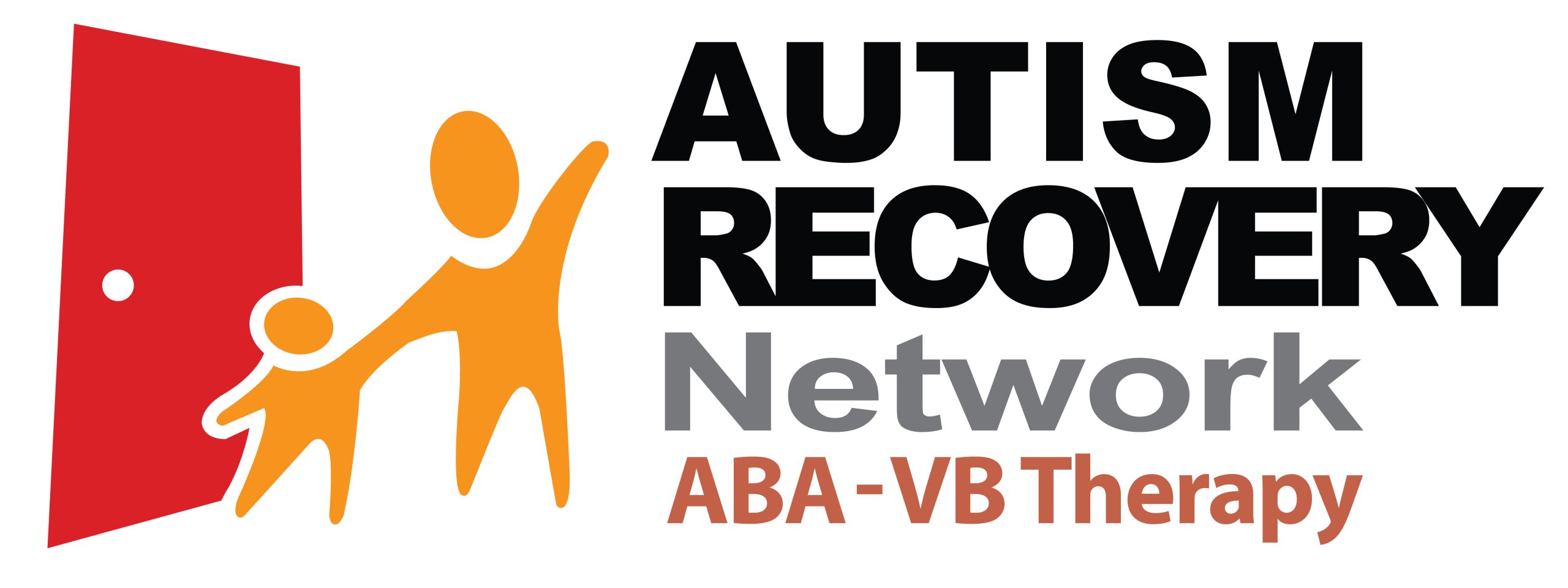ABA-VB Therapy & Training
How Can Applied Behaviour Analysis (ABA Therapy) in Hong Kong Help My Child?
ABA training, also known as Applied Behavior Analysis in Hong Kong, is an intensive, structured teaching program which simplifies complex sets of behaviors and skills into simple components. During ABA Therapy in HK, children learn each component through trials which tests to see how they respond to a stimulus (eg: a sound or object), and correct responses are rewarded while incorrect responses are ignored.


At the start of ABA in Hong Kong, therapists use physical rewards such as food and toys until they become paired (ie: associated) with these rewards. Gradually, the ABA HK therapists would also use social rewards such as hugs and praise in conjunction with physical rewards during this children behavior problem training in Hong Kong. Over time, ABA Hong Kong therapists will raise the difficulty for earning the rewards and eventually replace the physical rewards with the social ones. As the child learns more and more components through Applied Behavior Analysis in Hong Kong, they can be generalized and then combined into useful skills.
ABA training is the only therapy for autism endorsed by the U.S. Surgeon General. ABA therapy HK programs often require up to 40 hours per week of one-to-one children behavior problem training in Hong Kong over a continuous period of 2 or more years. Based on groundbreaking research published by psychologist B.F. Skinner and his colleagues, ABA therapy was successfully used in 1967 to treat the disorder. ABA in Hong Kong and abroad became popular in 1993, after extraordinary gains were documented (“Long Term Outcome for Children with Autism Who Received Early Intensive Behavioral Treatment” by McEachin, Smith, & Lovaas) as well as the publication of Catherine Maurice’s book (“Let Me Hear Your Voice”) about her two children’s recovery after ABA therapy.
ABA-VB Training Teaches Functional Language Through Verbal Behavior (VB)
Applied Behavior Analysis (ABA training) in Hong Kong is an evidence-based method of teaching, which utilises rewards (ie: reinforcers) in the ABA therapy process to educate appropriate behaviors and responses during children behavior problem training in Hong Kong.
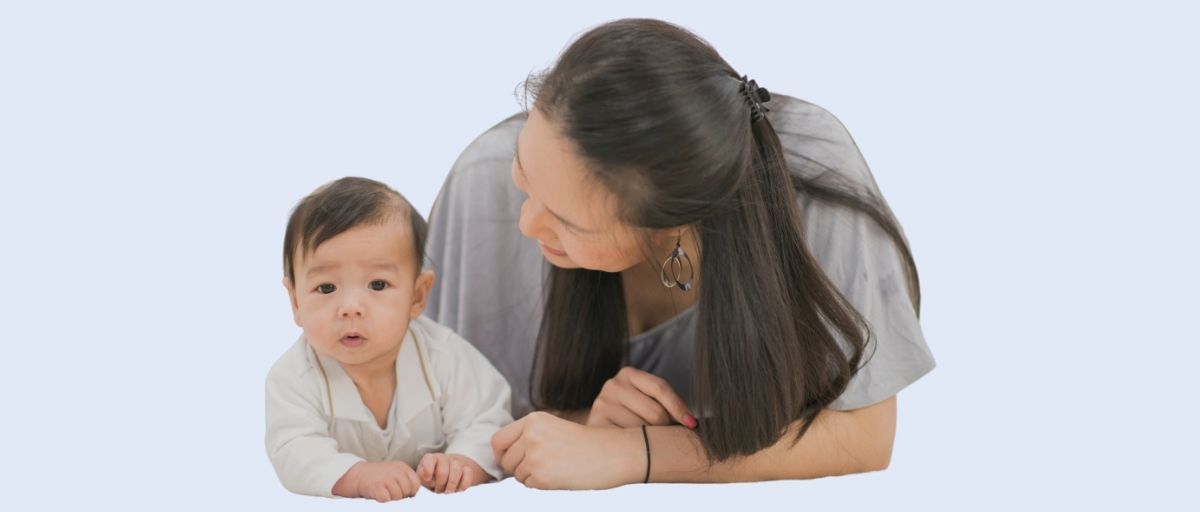
Our ABA Hong Kong therapists break down skills into their smallest components, allowing the child to master simple skills. These simple skills acquired through ABA training are then used as the foundation to build towards more complex skills. Over time, our ABA HK therapists will reduce the number of reinforcements so that the child no longer needs constant rewards to learn.
Verbal Behavior (VB) is based on the work of a pioneering psychologist, B.F. Skinner, who described the process of learning through the consequences of behavior. Building on this basic foundation of psychology, applied behavior analysis in Hong Kong remains the most researched and scientifically proven treatment available for autistic children.
In ABA-VB therapy, we place an emphasis on Verbal Behavior (VB) to ensure that the child truly understands what he/she has learned. This is in contrast to traditional ABA in Hong Kong, which emphasizes on the child performing specific, desired behaviors.
Our Pioneering ABA-VB Therapy in HK
– This is the question that ABA-VB aims to help children understand using the principles of ABA therapy in HK. In the traditional approach used by most other ABA HK therapists, if the child can name and point to a cookie, the ABA HK therapist will assume that the child has already understood what a cookie is. That is not good enough for us.
Our pioneering ABA-VB approach makes use of traditional ABA training principles and teaching procedures, alongside the VB methods of teaching language, based on its function and the motivation of an individual. Our intensive ABA training sessions are conducted in unique, engaging and interesting forms, because it is our goal to motivate our learners to want to learn.
Unlike traditional ABA in Hong Kong which tends to get the child to sit through an otherwise boring lesson to achieve a reward, the Verbal Behavior Approach to Applied Behavior Analysis (ABA-VB) in Hong Kong aims to demonstrate to the child the value of communicating in words. This makes sense when we observe that children’s initial language use usually serves their desire to obtain something from someone.
Our ABA therapy in HK provided for a child may range from 15 hours, or up to 40 hours for an intensive ABA training programme. Our ABA therapy lessons are usually arranged in 3-hour sessions. Typically, the duration of ABA HK treatment is around 2 years, or until support is needed. The hours needed for ABA in Hong Kong would depend on the specific learning needs and goals of your child.
Our Individualized Educational Program (IEP) for your child follows the WebABLLS/ABLLS-R (Revised Assessment of Basic Language and Learning Skills), and AFLSonline/AFLS curriculum and focuses on enabling your child to acquire critical communication, learning and functional skills through ABA training.
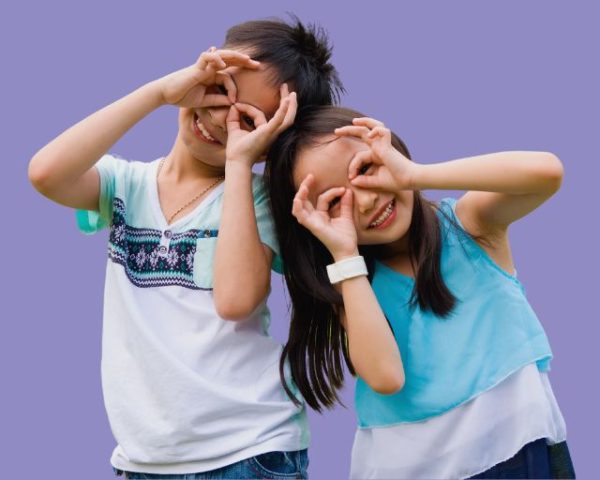
Beyond Robotic Children Behavior Problem Training in Hong Kong – Motivation Comes First
Unlike other types of ABA therapy and children behavior problem training in Hong Kong used by many providers, we do not aspire to just train children to give robotic responses.
Our ABA HK program sees motivation as a powerful key to shape your child’s behavioral issues and communication skills. Your child will learn through ABA therapy that appropriate expressive language is useful to them to get what they want. Here’s how our applied behavior analysis Hong Kong program goes beyond robotic therapy and other children behavior problem training in Hong Kong:

1. The Critical 25:
In our ABA HK program, we are able to systemize your child’s 25 critical learning areas in a natural learning environment, where they can generalize the acquired skills and start real communication. These areas in our ABA therapy fall into 4 major categories, including basic learner skills, academic skills, self-help skills and motor skills.
2. Communication:
During the early years, a good part of our children behavior problem training Hong Kong program is aimed at developing communication skills. Under our ABA Hong Kong program, your child will be able to use words to communicate. During ABA therapy in HK, they will learn to request things they like, and can tell you the features, functions, and classes of different objects. Also, they will systematically learn through intensive ABA training to sustain a reciprocate conversation with peers and family members. Consistency of the teaching style and intensive ABA training received make key differences with regards to program effectiveness.
3. Play:
In our applied behavior analysis Hong Kong program, all children will have play programs as part of their one-to-one work and will be taught precise play skills with a range of toys. In playtime during ABA therapy, the child is encouraged to play appropriately on the given equipment. Furthermore, they will also learn turn-taking and peer play skills through our children behavior problem training Hong Kong program.
4. Maintaining & Generalizing Skills:
During ABA in HK, when a child has learned a skill and moved onto another one, the existing skill is placed on maintenance. The teaching by our ABA Hong Kong therapists breaks down tasks, even simple ones, into a series of steps, each step preparing the way for the next. During ABA training, success is reinforced with consistent praise and rewards that motivate the child, so that the small segments of learning gradually build up into an understood and meaningful “whole”.
5. Handling Difficult Behavior:
Autistic children can display challenging behaviors which disrupt their learning during ABA therapy in HK. In dealing with such challenging behaviors, our ABA HK therapists will use the least intrusive and most natural technique that is effective. The aim of our ABA therapy is to reduce unwanted behaviors and to increase desirable ones by encouragement and praise (positive reinforcement). Where a child is in danger of hurting himself or someone else, they will be safeguarded with specific measures within our children behavior problem training Hong Kong program.
6. Monitoring Progress:
The progress of children behavior problem training in Hong Kong will be evaluated based on the data gathered by the ABA HK therapist. Regular team meetings will be conducted to discuss the effectiveness/inefficiency of the applied behavior analysis Hong Kong program, so that further actions can be taken to remedy the current situation.
Communication Skills Learned During ABA-VB Therapy
In ABA-VB therapy, the child starts by learning to mand – requesting for desired items, information and activities. During ABA therapy, care is also taken to teach the child to mand the desired object only when they are naturally expressing interest, such as manding for snacks when they are hungry. This is unlike traditional ABA training, which does not care if the child is interested or not. As the child becomes more motivated and competent with language during ABA therapy in HK, other aspects of language are also introduced and reinforced while maintaining his motivation:
- Receptive repertoire: following instructions non-verbally
- Intraverbal: verbally responding to other people’s speech
- Tact: Describing, naming or labelling objects
- Echoic: Repeating other people’s speech
- Imitation: Copying observed behaviour
- Textural: Reading skills
- Transcriptive: Writing skills
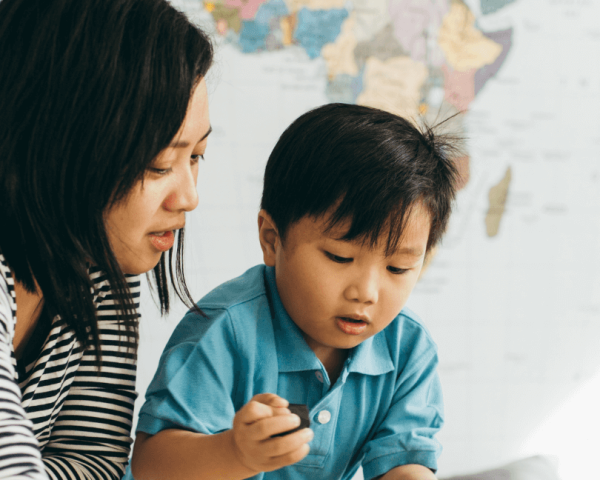
In ABA-VB training, we also require the child to:
- What do you eat? (function)
- What has chocolate chips? (feature)
- Find the food (class)
- Tell me what you eat.
- What has chocolate chips?
- What’s crunchy?
Going beyond memorizing definitions and correction of patterns in children behavior problem training in Hong Kong (which traditional ABA in Hong Kong considers sufficient), the end result of our ABA therapy is a child who understands words and uses speech actively in his/her daily life. This type of ABA training provides a firm foundation for the child to eventually lose his/her diagnosis, and enter the mainstream educational system.
Comparing ABA-VB Training & The Traditional Approach
| ABA-VB Therapy | Traditional ABA Therapy | |
| Language Acquisition | Faster language acquisition through early emphasis on functional language. By teaching language for obtaining reinforcers (ie: mands), this ABA HK approach encourages faster language acquisition; the child would learn that using language is valuable for obtaining their favorite items or activities. | Language training is more limited. Children are taught receptive (comprehension) and expressive language during ABA in Hong Kong. |
| Reinforcement & Motivation | Ongoing emphasis on capturing motivation. We recognize that a child’s desire for certain items or activities change over time. A simple example would be a child losing interest in obtaining cookies once they are full. Thus, constant monitoring during ABA therapy in HK is required to sustain a child’s motivation for learning. | Insensitive to changes in a child’s motivation to obtain a particular reinforcer. |
| Mode of Instructional Delivery | Natural environment teaching. Varied instructions, and natural modes of teaching are utilized during ABA therapy in HK, so that children would find it easier to respond in different situations. | Distraction-free environment. Short & rigid instructions during intensive ABA training. |
| Teaching Procedures | Discrete trial & natural environment teaching. Interspersed trials. Fluency training. Error-less mode of ABA HK teaching. Correction procedures. | Intensive, discrete trial teaching during ABA in Hong Kong. No-no-prompt sequence. Model-prompt-switch-repeat. |
1-On-1 Training
1-On-1, Intensive ABA Training
At our ABA Hong Kong centre, we seek to empower your child to reach his or her maximum potential through our applied behavior analysis Hong Kong program, which equips him or her with the right set of tools to enter mainstream education. We have our Board Certified Behavior Analysts, Registered Behavior Technicians and highly qualified ABA Hong Kong therapists, who can astutely tap into the learning needs of children and enable them to lead more fulfilling lives.
Our ABA Therapy HK Curriculum:
If your child has special educational needs, then the best option you have at your disposal is ABA training. Our ABA Hong Kong therapists are well-versed in the ABLLS-R (Revised Assessment of Basic Language and Learning Skills) curriculum, which essentially is an assessment tool to help them gauge a child’s abilities and skills. Our IEP aids us in creating a well-structured ABA training plan for your child who may be suffering from cognitive or language delays.
The ABLLS-R curriculum as a part of our ABA training program is a revised edition of the original ABLLS, designed by Dr. Mark L. Sundberg and Dr. James W. Parrington. The 2006 revised version of the assessment has improved the measurement of some of the original abilities and skills during ABA therapy. Moreover, it has developed a sequence of section progress and developmental order and can help in determining the following in children:
- Communication and language abilities
- Motor skills
- Self-help skills
- Social interactions
- Academic abilities
The Goal of Our WEBABLLS/ABLLS-R Assessment
By conducting this assessment, our therapists conducting your child’s ABA training can get an understanding of the potential obstacles that could be standing in the way of your child’s learning. This part of the ABA therapy helps them to identify the necessary skills that their child has to build in order to effectively communicate and interact with the world around them. Helping children acquire vital life skills is a fundamental focus of our ABA training program — something that our ABA HK therapists consider with dedication and seriousness.
Our ABA training program’s detailed ABLLS-R criteria-referenced assessment is most commonly used for training children diagnosed with ASD, or who have other developmental delays and disabilities that are impeding their academic and social growth. However, it is suitable for anyone who experiences or has experienced delayed development of basic communication or life skills, and not just children behavior problem training in Hong Kong.
The ABLLS-R assessment of our ABA training program is divided into two books that work together to help our ABA Hong Kong therapists accurately assess your child’s current skills. We use the ABLLS-R Protocol to assess your child’s performance. On the other hand, Our ABA HK therapists follow the ABLLS-R Guide to get information on the features of the assessment, how to accurately score different items, and the methodology to set IEP goals through WebABLLS.
Our goal behind conducting the ABLLS-R assessment during ABA therapy in HK is to get a holistic understanding of your child’s skill set. Each child has the ability to acquire and hone new skills, but some of them may require external assistance to set off their latent ability. This is exactly what we seek to offer through our intensive ABA training by observing your child’s behavior in each of the prescribed 25 skill areas. This is a complete applied behavior analysis in Hong Kong for your child’s behavior, which provides insights into what needs to be done.
For instance, there’s a “Motor Imitation” section in the ABLLS-R, where the ABA HK instructor must make physical movements and actions and then record your child’s ability to imitate them successfully. The “Labelling” section is another example of one of the areas of ABLLS-R assessment in which the ABA HK instructor records your child’s ability to name and classify different objects and groups of items.
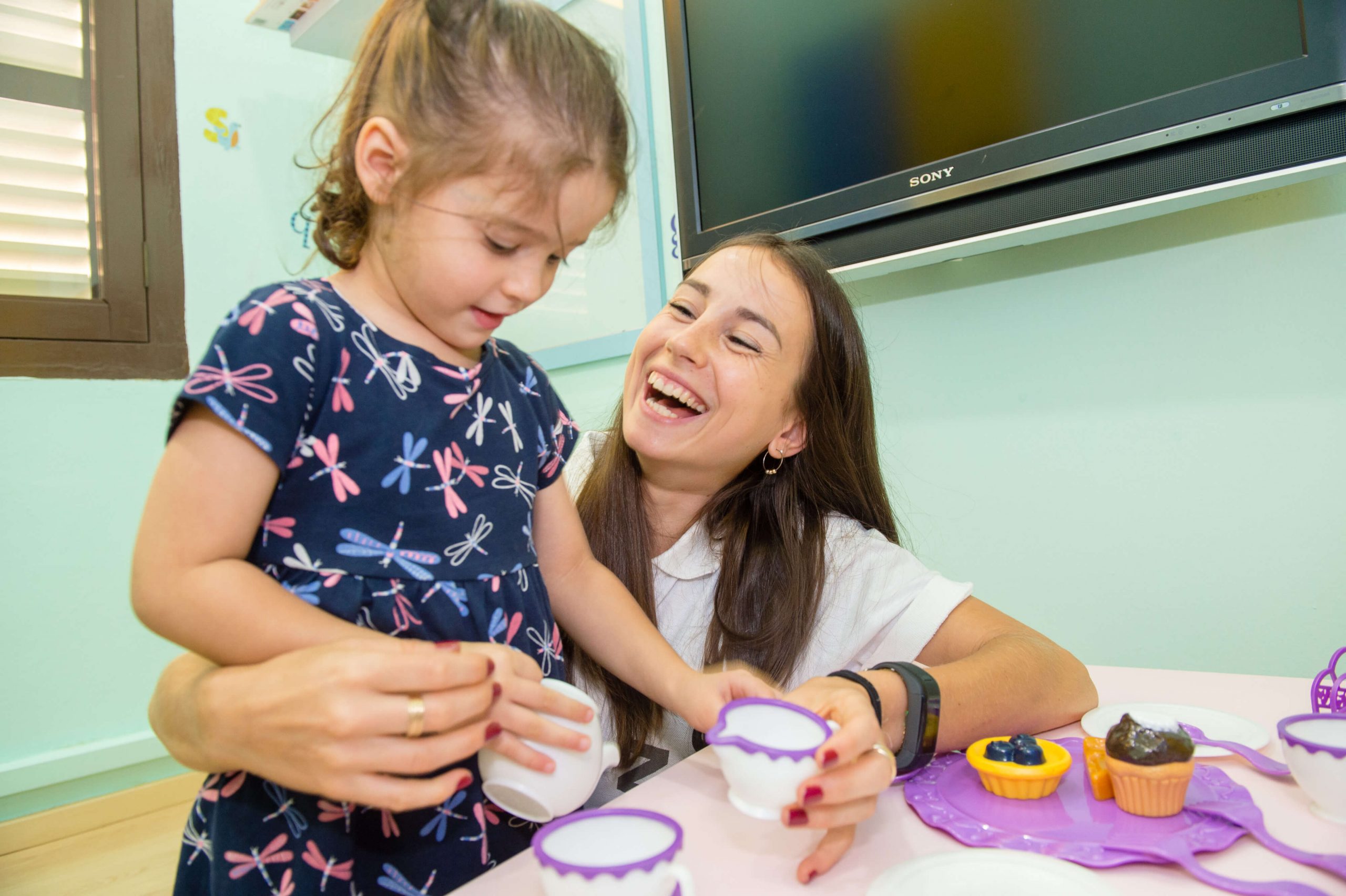
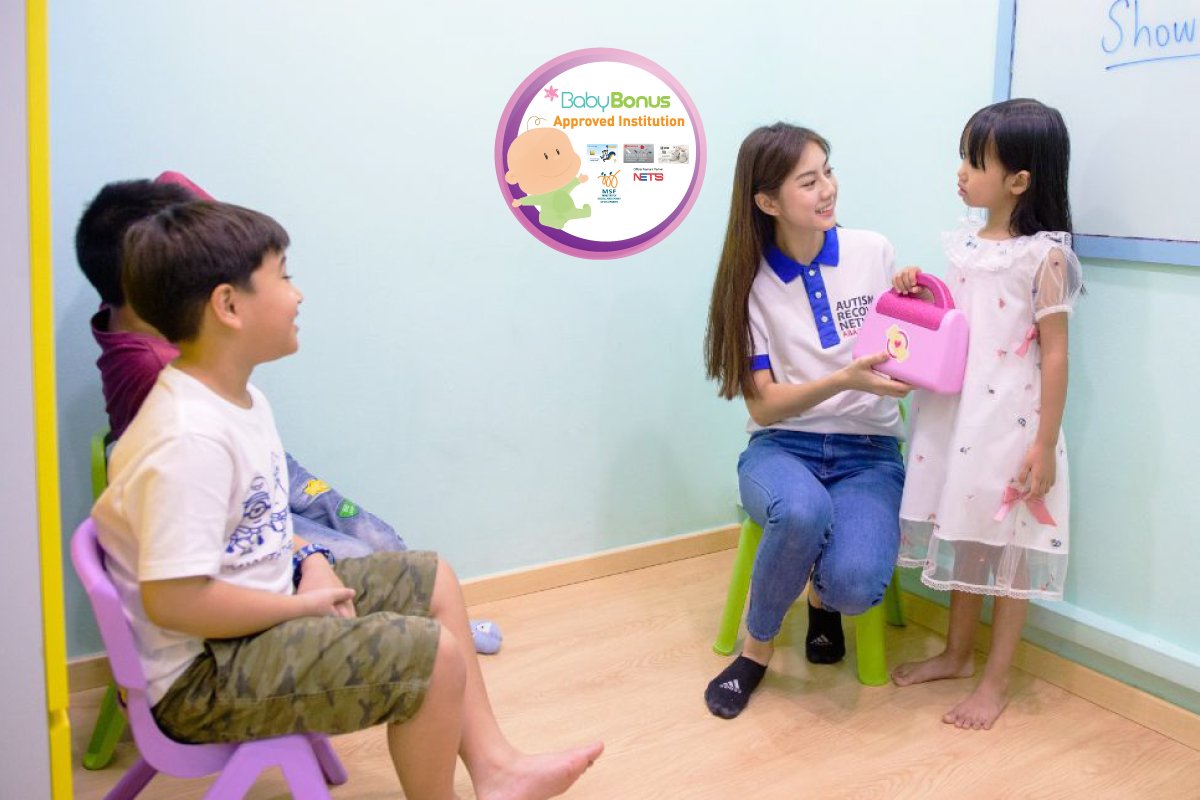
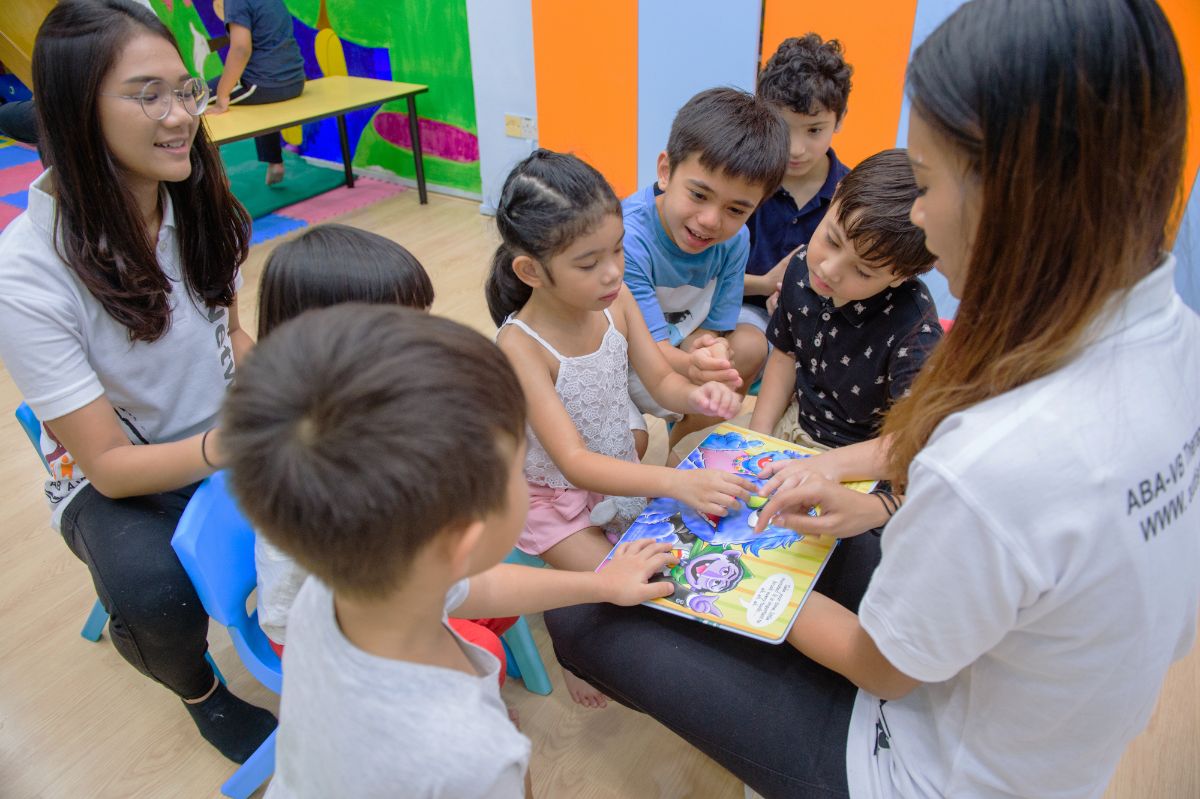
Intensive ABA Training – Our Advanced Verbal Behavior Therapy Involves:
- One therapist to one child intensive ABA training
- Comprehensive and holistic ABA HK curriculum individualized to your child’s learning needs.
- Facilitating learning through engaging activities during ABA therapy.
- Tracking your child’s progress in ABA training through WebABLLS/ABLLS-R.
- Our ABA therapy HK supervisors monitor your child’s progress every week.
- Monthly meetings with parents to review your child’s IEP and adjust the ABA Hong Kong curriculum accordingly.
Our intensive ABA training program is a one-on-one, all-inclusive, and highly individualised intervention that accelerates the trajectory of the development of skills in children with special needs. We put an expert instructor during ABA therapy in HK to work, who provides a stimulus to your child in order to assess skills depending on what he or she does and does not do. Moreover, we strongly believe that parents have an active role to play in applied behavior analysis in Hong Kong, so your input is taken into consideration.
Based on the results achieved from the ABLLS-R assessment, we create a holistic ABA Therapy HK curriculum that caters to your child’s learning needs. Our ABA training aims to align their skills with different activities to engage them and facilitate their learning. Our ABA Hong Kong therapists track your child’s progress every week to ensure they are meeting their goals and hold monthly meetings to update you. With your input, we review your child’s IEP and make necessary adjustments to your child’s ABA training curriculum. You can trust that we will be there at every stage of your child’s development.
Home ABA Therapy in HK: Schedule, Language & Fees:
Our ABA HK therapists can also travel to your home to carry out the 1-to-1 Intensive ABA Training Programme for your child. The ABA Therapy Home Programme focuses on teaching within your child’s natural environment, as well as training family members on how to teach your child effectively.
Home ABA Therapy Time: | Monday – Friday: Morning Plan: 9:00am – 12:00pm Afternoon Plan: Any 3-hour slot from 2.00pm – 6:30pm Whole Day Plan: 9:00am – 12:00pm & 1:00pm – 4:00pm Saturday: 9:00am – 12:00pm |
ABA Therapy Language: | English / Cantonese |
ABA Therapy HK Price (per hour) | *Please contact our ABA HK centre for most updated information
|
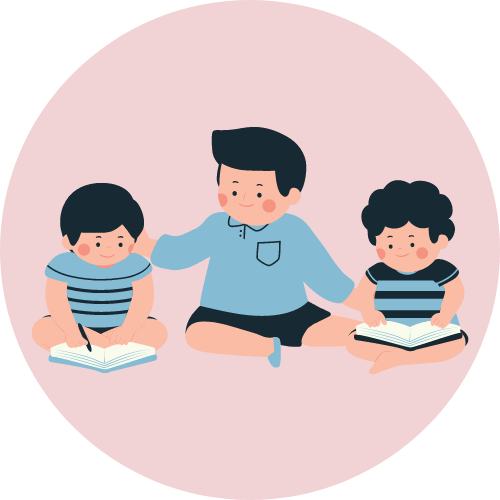
About Our ABA-VB Training & Therapy – FAQs:
Of all forms of therapy and education that are available for autistic children, ABA training is the most established with 40 years of research backing it. ABA therapy in HK and abroad is the only treatment whose benefits have been consistently validated by independent scientific research. Also, applied behavior analysis in Hong Kong and internationally has been endorsed by many organizations including (but not limited to) the following:
- United States Surgeon General
- American Academy of Neurology
- American Academy of Family Physicians
- American Academy of Pediatrics
- American Psychological Association
- Society for Developmental and Behavioral Pediatrics
- National Institute of Child Health & Human Development
- National Institute of Mental Health
- Association for Science in Autism Treatment (ASAT)
- New York State Department of Health
We provide a more advanced version of ABA training, which focuses on helping these children develop and use language skills, and not just traditional children behavior problem training in Hong Kong. You may also like to read a New York Times’ article to learn more about the effectiveness of ABA therapy.
ABA training is a “Reinforcement” based science. It is within human nature to be motivated by foreseeable things that will help us achieve certain goals, and children are no different when it comes to this. Reinforcement encourages positive behavior and promotes frequency in a child practising good behavior in the future. The fact that Reinforcement is defined as occurring after a behavior shows that the terms “Bribe” and “Reinforcement” are not synonymous. Bribes involve saying to someone, “If you do this, I will give you this.” Bribes are dependent on a negotiation before the behavior occurs. Since Reinforcement occurs only after a behavior during ABA therapy is completed, they are not one in the same. In fact, most ABA training programs teach that the use of “If, Then,” statements are often contrary to good teaching. ABA therapy in HK focuses on identifying strong motivational things in order to help children engage in the ABA training program, and there are no limits as to what reinforcers can be.
Yes! ABA therapy is a science that was theorized and developed long before there was any thought of applying it to ASD. ABA training is used to help all kinds of people overcome all kinds of social and behavioral problems, such as quitting smoking, personality disorders, relationship counseling, obsessive compulsive disorders, and many other common human issues. ABA therapy and behavioral principles only began being used for autistic children in the late 1960’s and 1970’s.
ABA-VB avoids the tendency of traditional ABA to train children in a robotic manner to perform tasks without understanding. Our therapists are required to ensure that the children truly understand what they have learned. For example, children must not only learn about the item being taught, they must also demonstrate how to use it and generalise its use for different situations in real life.
Find out more about ABA-VB here.
Our ABA training programs are very flexible and customized to suit individual needs. When designing an applied behavior analysis Hong Kong program, we look at factors such as your child’s age, language ability and existent skills. Our ABA Hong Kong centre treats both high and low functioning children, of which some are non-verbal. Also, our ABA HK therapists can incorporate practices instructed by other professionals into the ABA training program, e.g. oral exercises instructed by your child’s speech therapist.
In addition, ABA is the only therapy recommended by the Surgeon-General to treat autism. Research conducted on it since the 1960s continues to build on the most successful intervention for improving autistic children’s outcomes, especially in developing their cognitive and language abilities.
The cost of ABA therapy in HK depends on the number of sessions conducted per month, and the experience of therapists assigned to your child. It is not uncommon for people to use applied behavior analysis Hong Kong services costing HKD$30,000 or more per month. You can consult us for specific costs of ABA therapy needed for your child based on their needs.
The cost of ABA therapy in HK may be considered high by some, given the frequency of intensive ABA training sessions. The success of applied behavior analysis in Hong Kong also requires parents to commit time and effort to instructing and training their children outside ABA therapy time. ABA in HK is best seen as a long-term treatment, supporting the child’s learning through the years of early schooling and adolescence. However, the program and delivery of ABA in Hong Kong may change as the child progresses through different stages of life. For instance, when a child approaches school-age, the ABA training program may be geared more heavily toward specific academic and social skills. In return for investing precious resources into ABA therapy, parents can expect to see their child progress in skills, behavior and general quality of life.
Our therapists mainly come from a psychology and pedagogy background. They have received extensive training from Dr. Partington and our program supervisors. We invest very heavily in staff development and training to make sure that our therapists always provide the best quality service in Asia.
ABA therapy is generally considered an intensive form of treatment. However, we are mindful to ease children into the flow of activities during the ABA HK session, especially when they first begin an ABA training program. Since our Verbal Behavior (VB) approach to ABA training is loosely structured around a child’s preferences and infused with age-appropriate leisure activities, instead of being mundane and tiring, our ABA therapy sessions are actually invigorating and enjoyable for the child. Consequently, motivation for learning is heightened as a result. We recommend a minimum of three sessions per week in order for the child to benefit from the effects of our ABA training program.
It is important to be understanding and watchful with your child’s behavior pattern. It is often the case that autistic children have difficulty getting their ideas and thoughts across, which may lead to frustration when misunderstood. Being taught through ABA therapy to communicate effectively is the best way to counter this issue along with providing positive reinforcement to motivate your child.
Our intensive ABA training program is based on the science of behavior and learning. Our ABA Hong Kong program depends on our knowledge of how the behavior of children works, how they are affected by the environment, and the best of learning. While conducting intensive ABA training, we seek to inculcate behaviors in children with developmental delays that are conducive to their growth and decrease the frequency of behaviors that negatively affect their learning or harm them.
Our intensive ABA training program can help children with language disabilities and developmental delays to improve their communication skills, social skills, attention, memory, and behavioral issues. The ABLLS-R assessment conducted as a part of our ABA training program can help in developing your child’s school curriculum and formulating effective treatment programs that improve his or her communication and language skills. The ABA training program at our centre is designed to prepare learners to become better individuals, adapt to changing environments, as well as function independently across different settings after ABA therapy.
Our intensive ABA training program is conducted by a board-certified behavior analyst (BCBA), who has a master’s degree, PhD, or other specialization in behavioral sciences and psychology. Our ABA Hong Kong professionals work directly with your child and have an in-depth understanding of his or her needs.
The ABLLS-R assessment conducted as a part of our intensive ABA training program is recommended for children of all ages. However, its main focus is to access the skill set of developing children in the age bracket of 2 and 6 years, because this is the time when they learn to speak and understand their first language. Then as they progress through ABA therapy in HK, goals set will be changed according to their immediate needs. In our ABA training, AFLS, IPG and social thinking programs will be included based on set goals for each individual.
In some cases, your child’s insurance should cover his or her ABA training, especially if the doctor prescribes that your child medically requires ABA therapy. There are some private health insurance providers that do provide intensive ABA training coverage. However, it’s best to get in touch with your insurance provider to get more clarity so that you can prepare your finances accordingly before commencing applied behavior analysis in Hong Kong.
